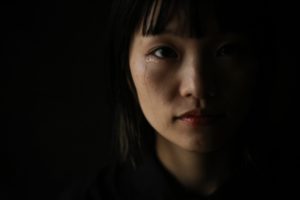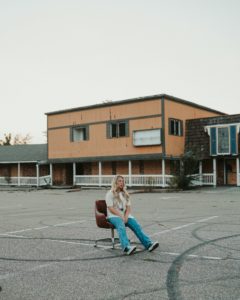People who suffer from autophobia, also known as monophobia, report feeling extreme anxiety whenever they are by themselves. Your relationships, social life, and career could all be negatively impacted by your fear of being alone. A traumatic event that occurred to you when you were a child may have also left you with a fear of being abandoned.
 The fear of being isolated, lonely, or alone is known as monophobia. This phobia is also sometimes referred to as isolophobia or eremophobia. This is a phobia, so by nature, it isn’t rational.
The fear of being isolated, lonely, or alone is known as monophobia. This phobia is also sometimes referred to as isolophobia or eremophobia. This is a phobia, so by nature, it isn’t rational.
Even though you may be aware that you are safe from harm in a physical sense, you might still be afraid of strangers or intruders, of being unloved, of having an emergency and not having any help, or of experiencing other unexpected events without assistance.
An agoraphobic cluster is a group of mental health conditions that includes monophobia, according to the opinions of professionals in the field. Agoraphobia is defined as an extreme dread of being outside or in an unfamiliar environment. There are varying degrees of anxiety disorder known as monophobia.
Some people can only function in the presence of a specific companion, while others can function in the presence of any other person in the same room, and still, others need there to be someone physically present in the home. This phobia can present itself in several different ways, including the following:
- anxiety caused by the prospect of being parted from a specific person
- The dread of spending time alone at home
- apprehension about going out in public by oneself
- The dread of being alone or cut off from others
- Fear of being forced to face a potentially hazardous situation by oneself
- Aversion to leading a solitary life
- Concern about feeling isolated or alone in the world
Manifestations of a fear of being alone
A list of specific criteria for diagnosing a phobia can be found in the Diagnostic and Statistical Manual of the American Psychiatric Association. These criteria are as follows:
 An unreasonable or excessive fear brought on by a particular occurrence or circumstance, such as being by oneself.
An unreasonable or excessive fear brought on by a particular occurrence or circumstance, such as being by oneself.- Anxiety that comes on suddenly and is out of proportion to the actual danger or threat that is present.
- The realization that the feared outcome is not likely to occur or that the fear is disproportionate to the circumstances.
- Whenever it is in your power, you should steer clear of the situation.
- Extreme unease when confronted with the circumstance.
- Fear that prevents a person from functioning normally in day-to-day life, such as attending school or maintaining a job or social life.
- Persistent anxiety that has been present for more than half a year.
- An apprehension that is not attributable to any other mental illness.
A fear or level of anxiety that persists over a long period and has a significant negative effect on a person’s quality of life can be considered a phobia. Even though most people dislike certain occurrences, circumstances, or things, a phobia is a more extreme form of anxiety that frequently calls for the assistance of a trained professional.
Monophobia is related to other types of social anxiety because it is associated with how an individual connects to other people in their immediate environment. Going through experiences that bring on monophobia can also result in a variety of physical symptoms, including the following:
- Sweating.
- Trembling or shaking like a leaf.
- Frequent hot or cold flashes.
- Having trouble breathing or a feeling of being short of breath.
- The feeling that one is suffocating.
- Rapid beating of the heart (tachycardia).
- A feeling of heaviness or discomfort in the chest.
- A feeling of sickness or an upset stomach.
- Symptoms such as a dry mouth or ringing in the ears.
- A feeling of fainting or dizziness.
- A state of bewilderment or confusion.
Causes of fear of being alone

Phobias are conditions that cause a person to experience feelings of fear and anxiety that are so intense that they interfere with daily life and routines. Your body’s “fight or flight” response is activated whenever you have a phobia. This leads your brain to believe that there is an immediate threat to your safety. People can develop phobias of any kind for many different reasons, including the following:
Biological. Your neurotransmitters may respond in ways that are unexpected to certain inputs, leading your brain to believe that you are in danger from a particular person, thing, or circumstance.
Both genetic and family factors. It is possible to inherit a propensity toward experiencing high levels of fear and anxiety from one’s parents. In a similar vein, if a child observes an adult member of the family reacting with fear to a particular circumstance, such as being alone, the child may internalize that fear and experience it themselves.
Environmental. Monophobia can be caused by traumatic experiences or by being in situations that bring extreme levels of anxiety when one is by oneself.
Even though researchers aren’t entirely sure what triggers phobias like monophobia, many experts believe that complex phobias like this one are brought on by a convergence of several different factors. In many cases, although this is not always the case, phobias can be linked, at least in part, to occurrences or experiences that occurred during childhood.
Diagnosing monophobia
A phobia such as monophobia can be diagnosed by a qualified mental health professional. Your doctor will be able to guide you through the subsequent stages of recovery once they have diagnosed you with autophobia, monophobia, or isolophobia.
To make an accurate diagnosis of monophobia, your primary care physician will most likely inquire about your medical history as well as your current state of physical health. Your doctor will need a detailed explanation of the circumstances that trigger your abnormally high levels of anxiety.
 Your primary care physician or a psychiatrist may give you a test that is known as a Behavioral Avoidance Test, or BAT, to determine the degree to which you shun or are afraid of being by yourself. The intensity of your fear or avoidance of a particular stimulus can be evaluated with the help of this tool, which is used by professionals.
Your primary care physician or a psychiatrist may give you a test that is known as a Behavioral Avoidance Test, or BAT, to determine the degree to which you shun or are afraid of being by yourself. The intensity of your fear or avoidance of a particular stimulus can be evaluated with the help of this tool, which is used by professionals.
Therapy for fear of being alone
The anxiety disorder known as monophobia, like many other types of situational phobias, is treatable through psychotherapy. Your phobia of being by yourself can be overcome with the assistance of a therapist in many different ways. The practice of exposure therapy.
This approach to treatment involves gradually putting a person in situations or environments that they fear for longer and longer periods until they can cope with those fears. The effectiveness of exposure therapy in assisting patients in overcoming specific types of phobias and anxieties has been demonstrated both scientifically and clinically.
Cognitive-Behavioral Therapy (also known as CBT). Cognitive-Behavioral Therapy, also known as CBT, is a combination of two different types of therapy – behavioral and cognitive – and is considered to be one of the most effective and researched types of psychotherapy.
The idea is to pinpoint issues or triggers, then investigate both your logical thoughts and the information you have about the circumstance, as well as your emotional reaction to the situation. The disruption of destructive patterns of thought and behavior can be very helpful in the management of phobias.
Medications. When it comes to coping with the extreme distress that can be brought on by phobias, there is a wide range of medications that have proven to be effective. In various situations, an individual who suffers from monophobia may find that antidepressants, anti-anxiety medications, and sedatives are all helpful in treating their condition.
Each of these kinds of medications requires a prescription from a medical professional and can only be used under the supervision of a physician.
“Tears”, Courtesy of Getty Images, Unsplash.com, Unsplash+ License; “Sitting in the Parking Lot”, Courtesy of Brock Wegner, Unsplash.com, Unsplash+ License; “Study Group”, Courtesy of Annie Spratt, Unsplash.com, CC0 License; “Sleeping Dog”, Courtesy of Bruno Emmanuelle, Unsplash.com, CC0 License
-
Kate Motaung: Curator
Kate Motaung is the Senior Writer, Editor, and Content Manager for a multi-state company. She is the author of several books including Letters to Grief, 101 Prayers for Comfort in Difficult Times, and A Place to Land: A Story of Longing and Belonging...





